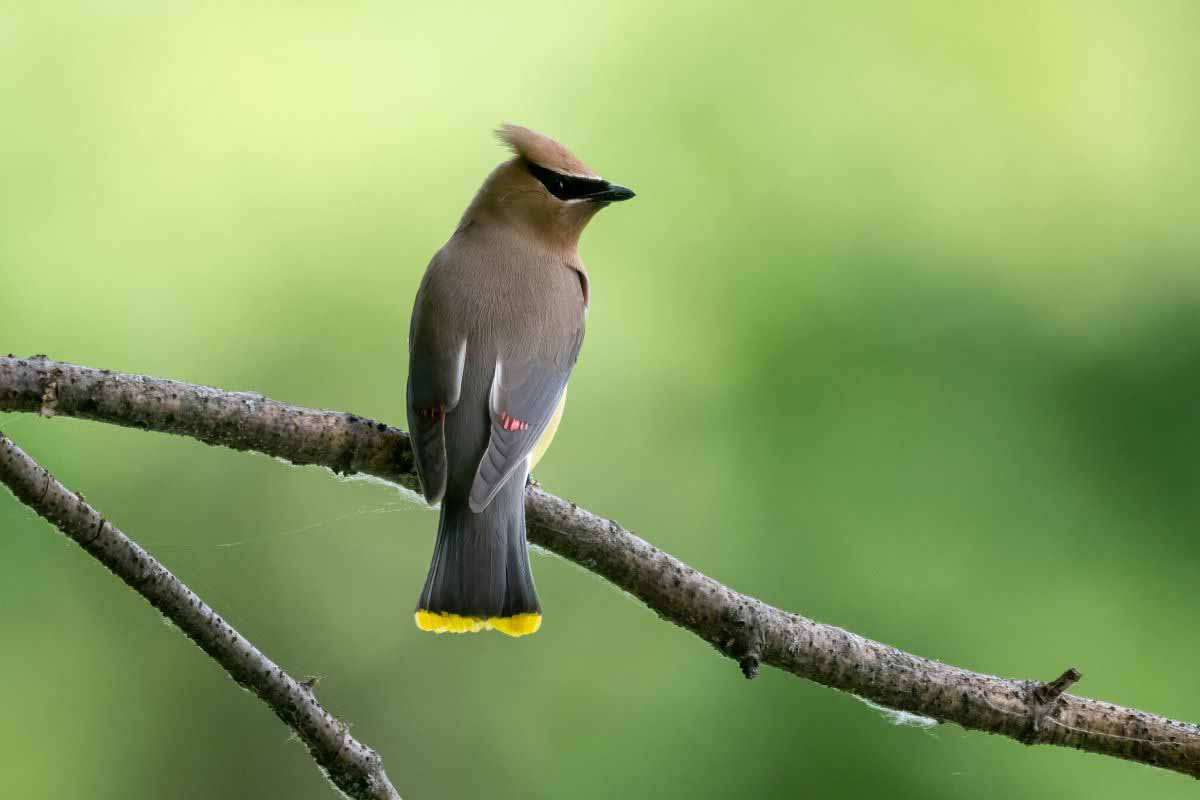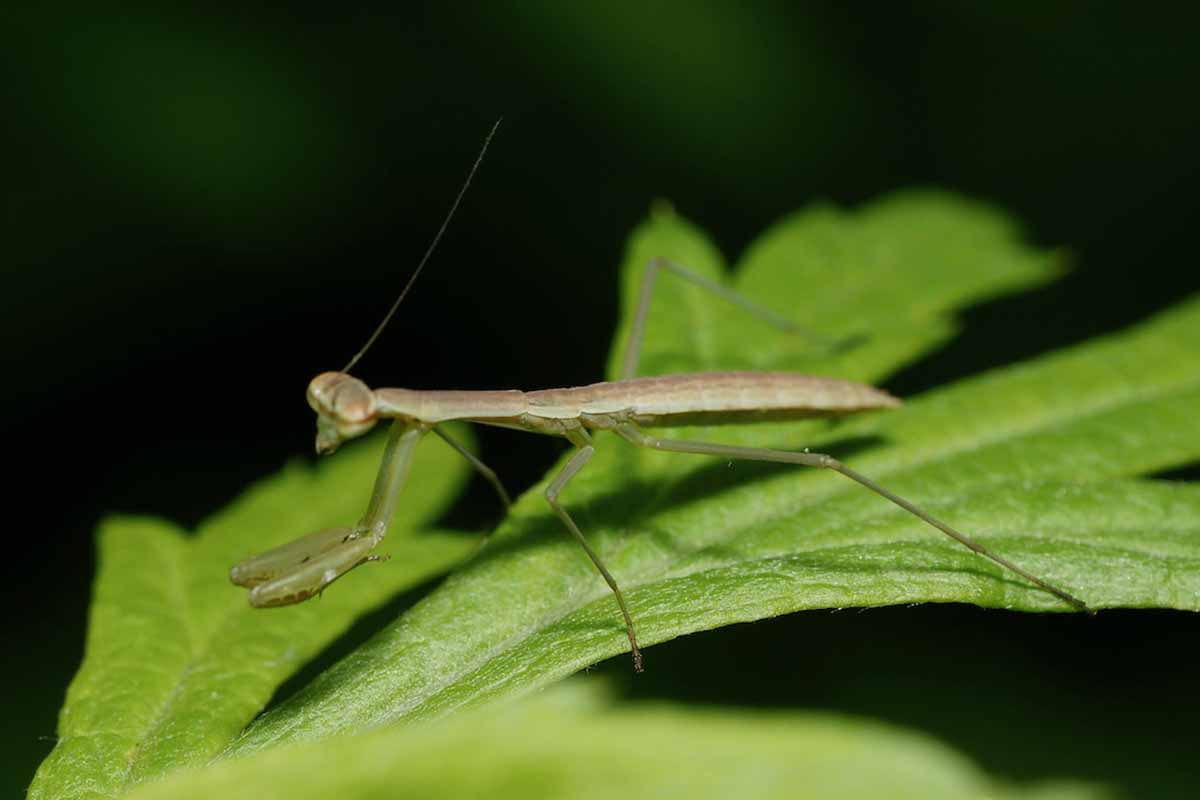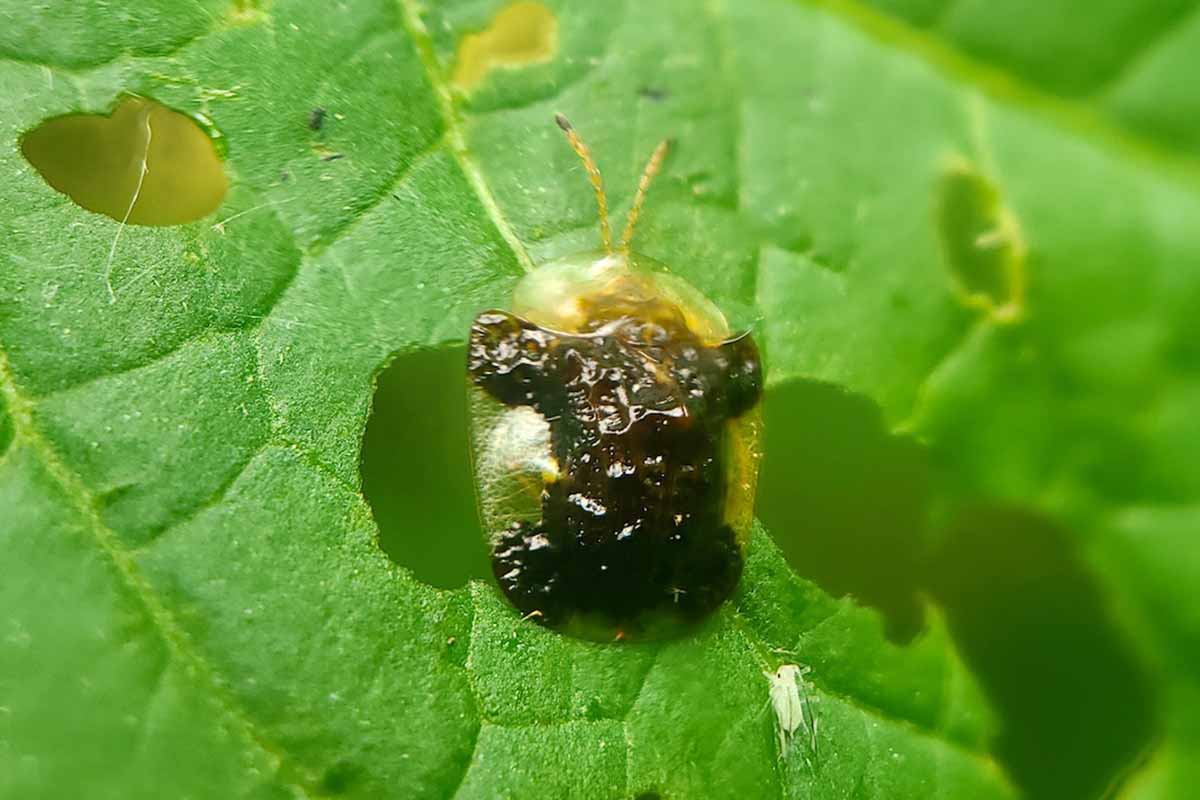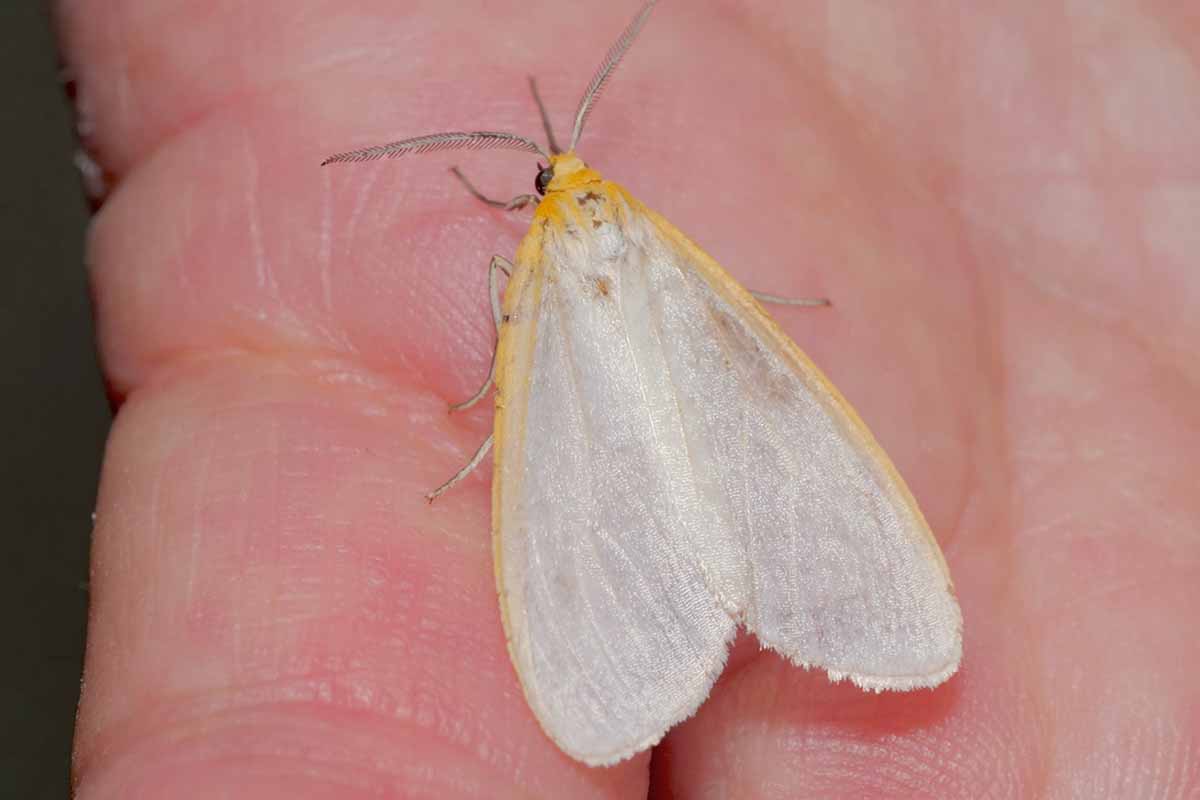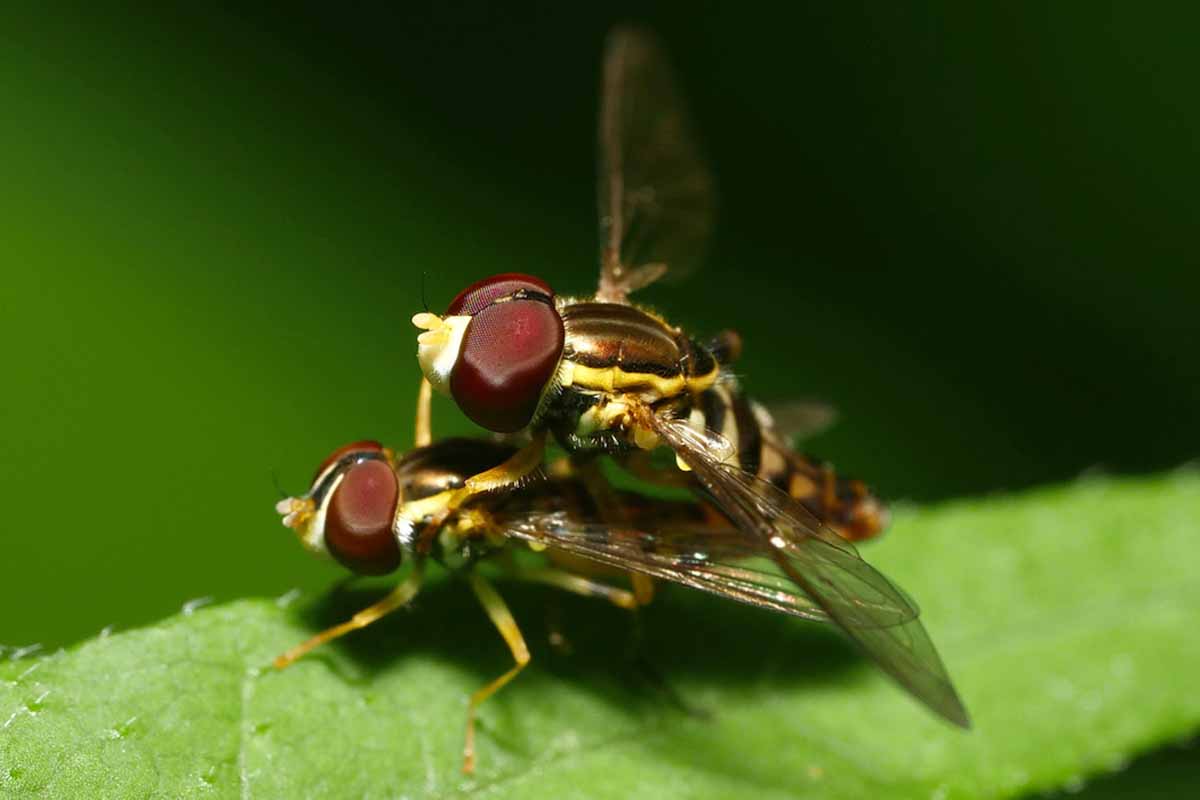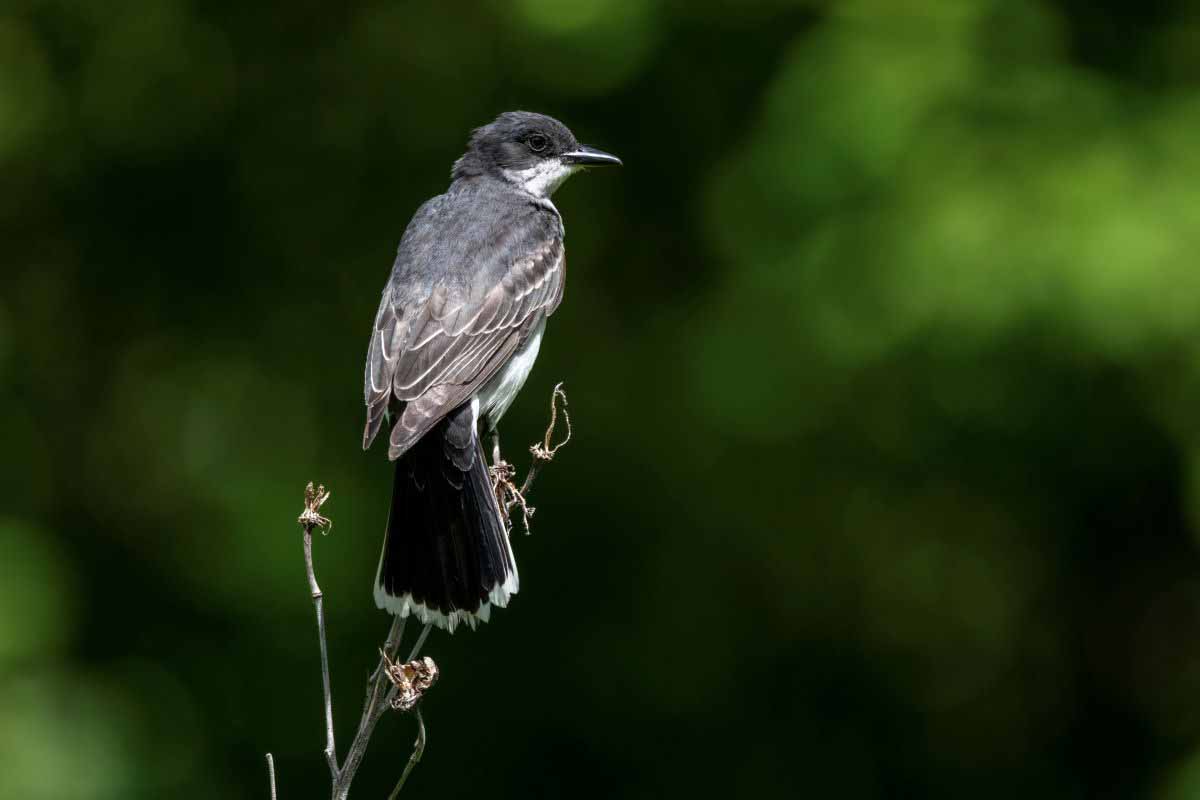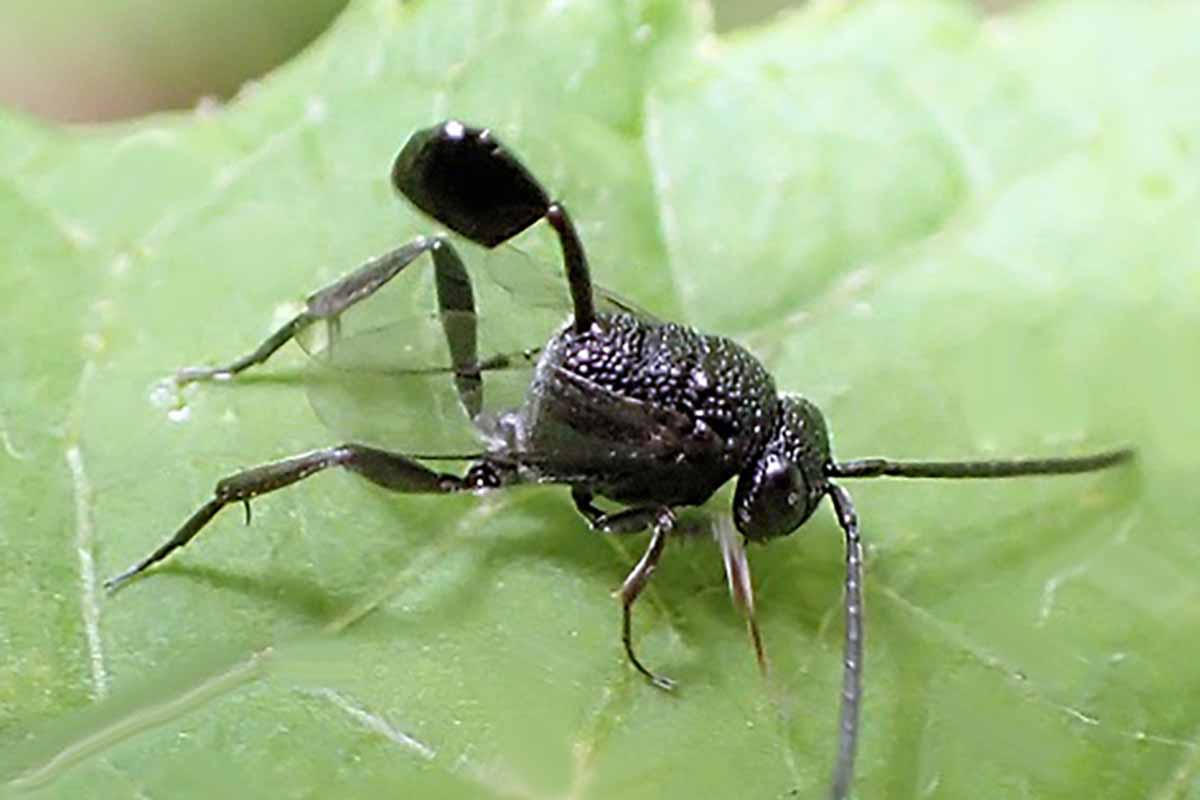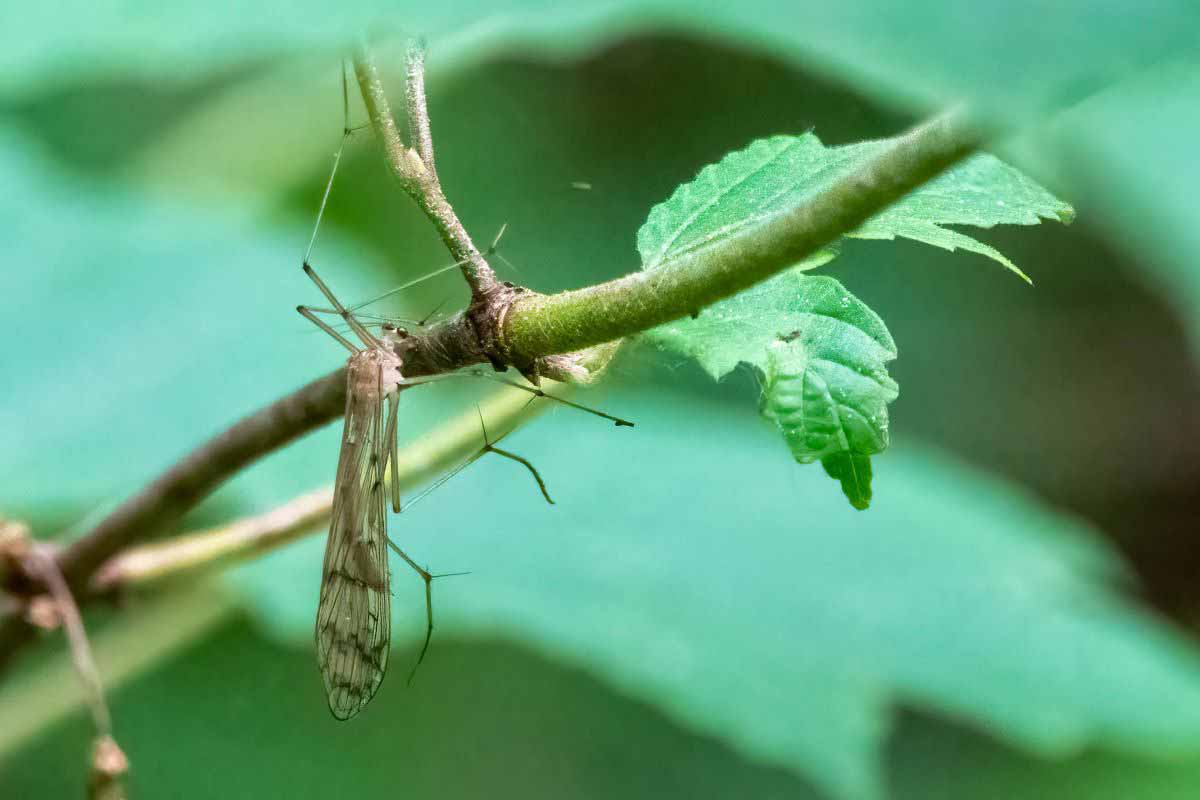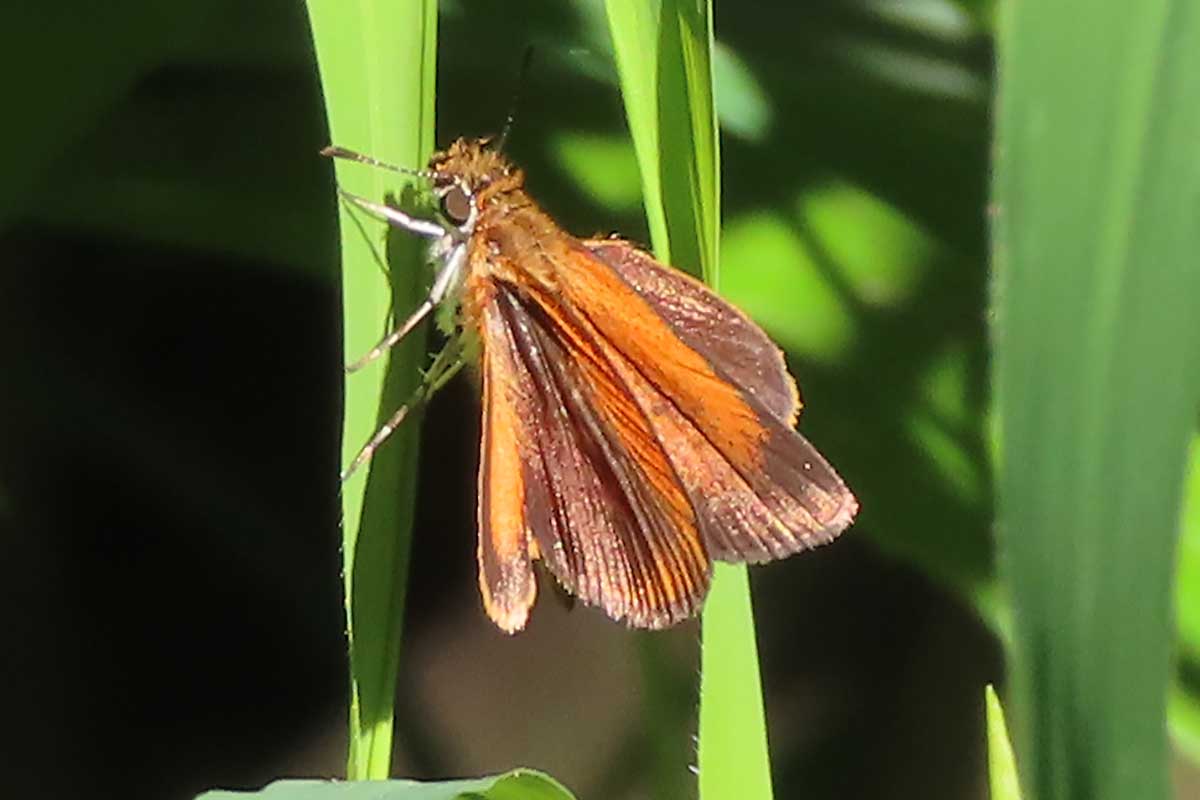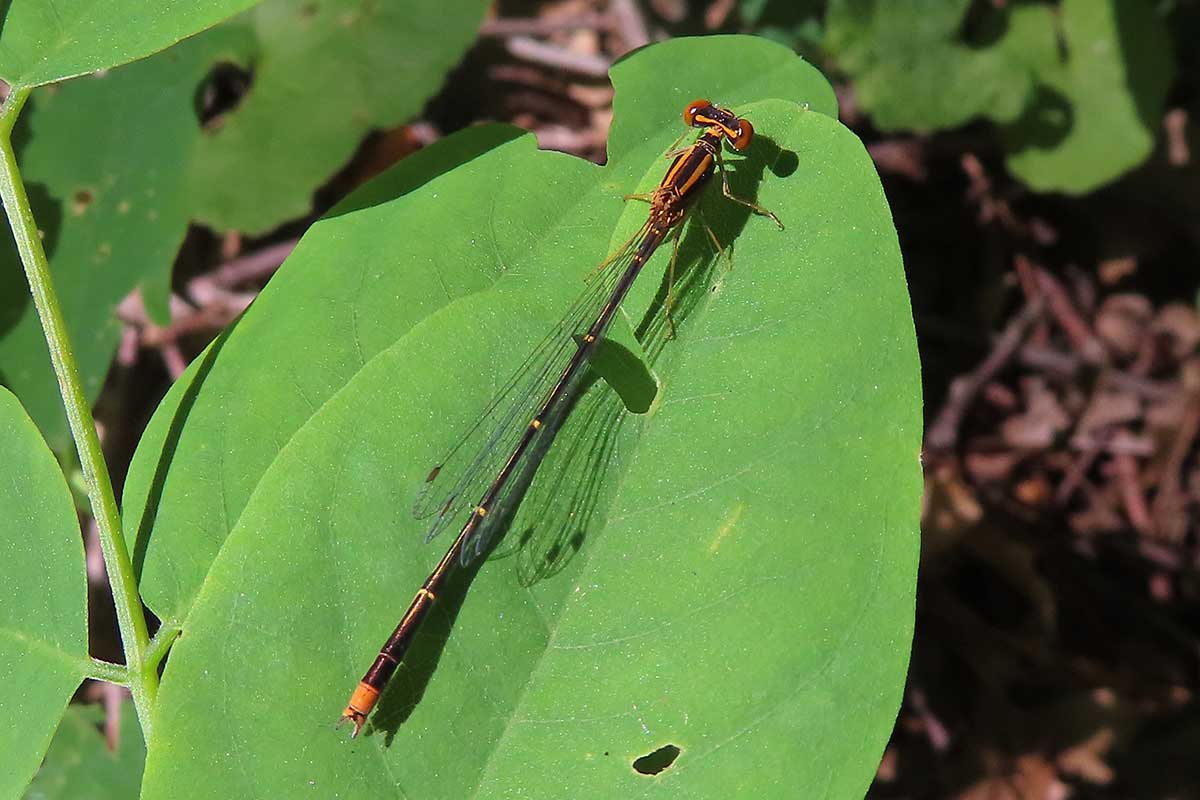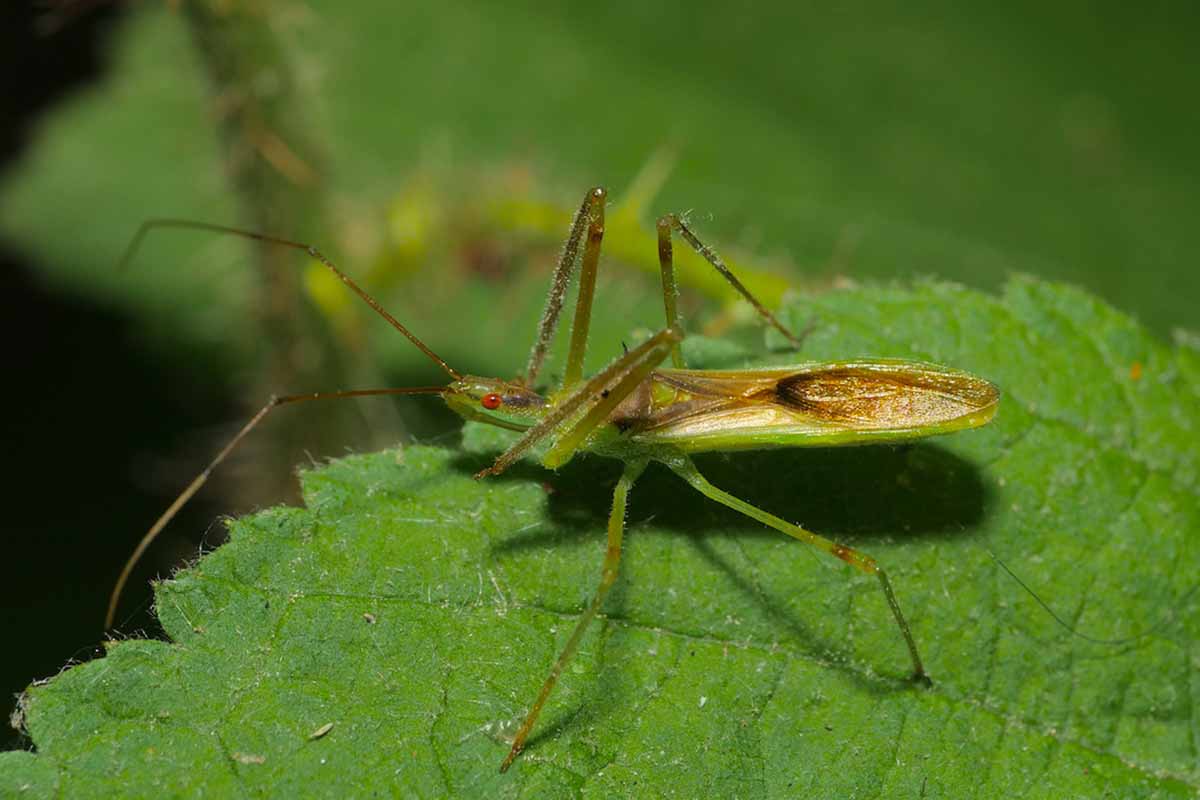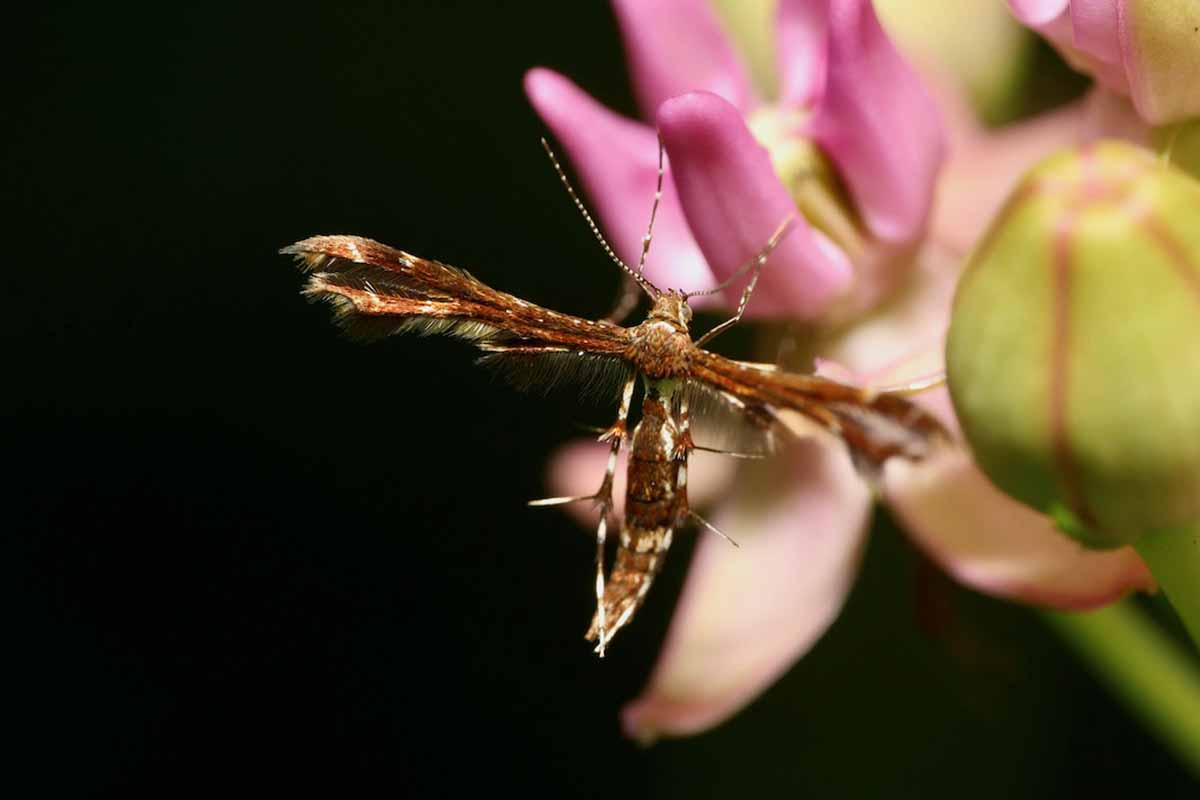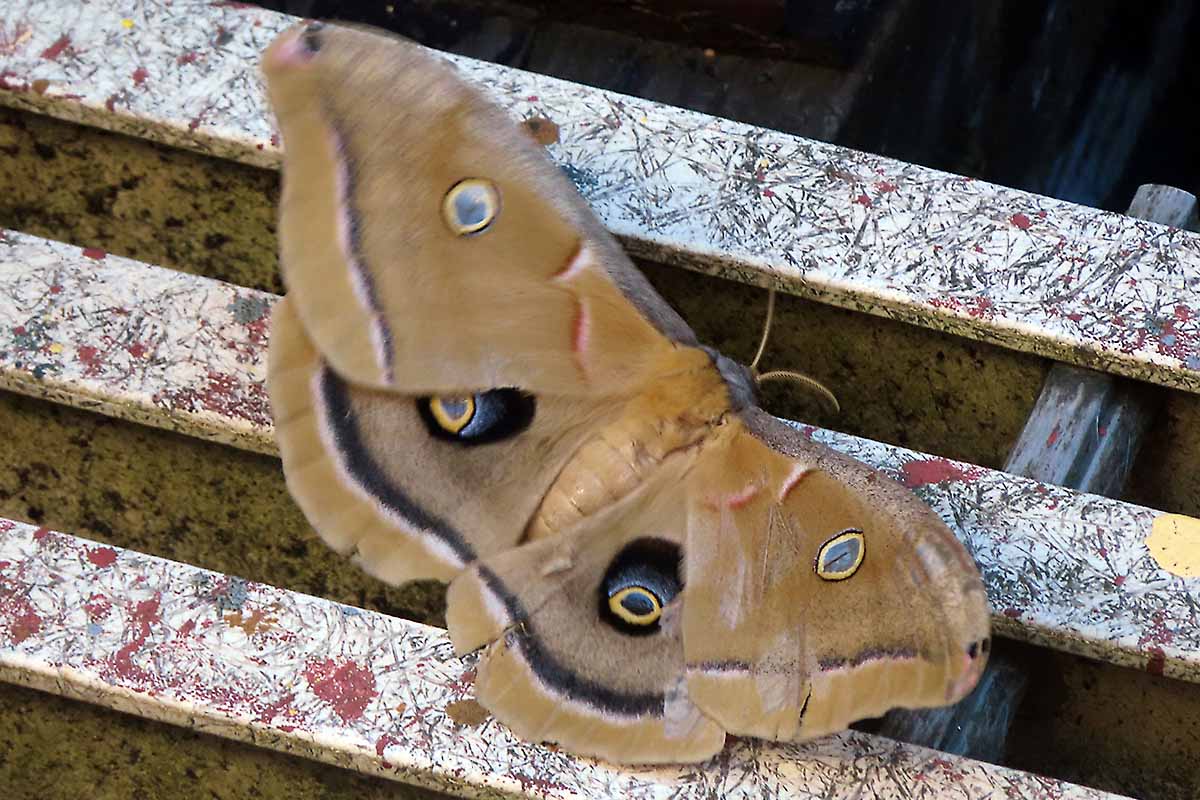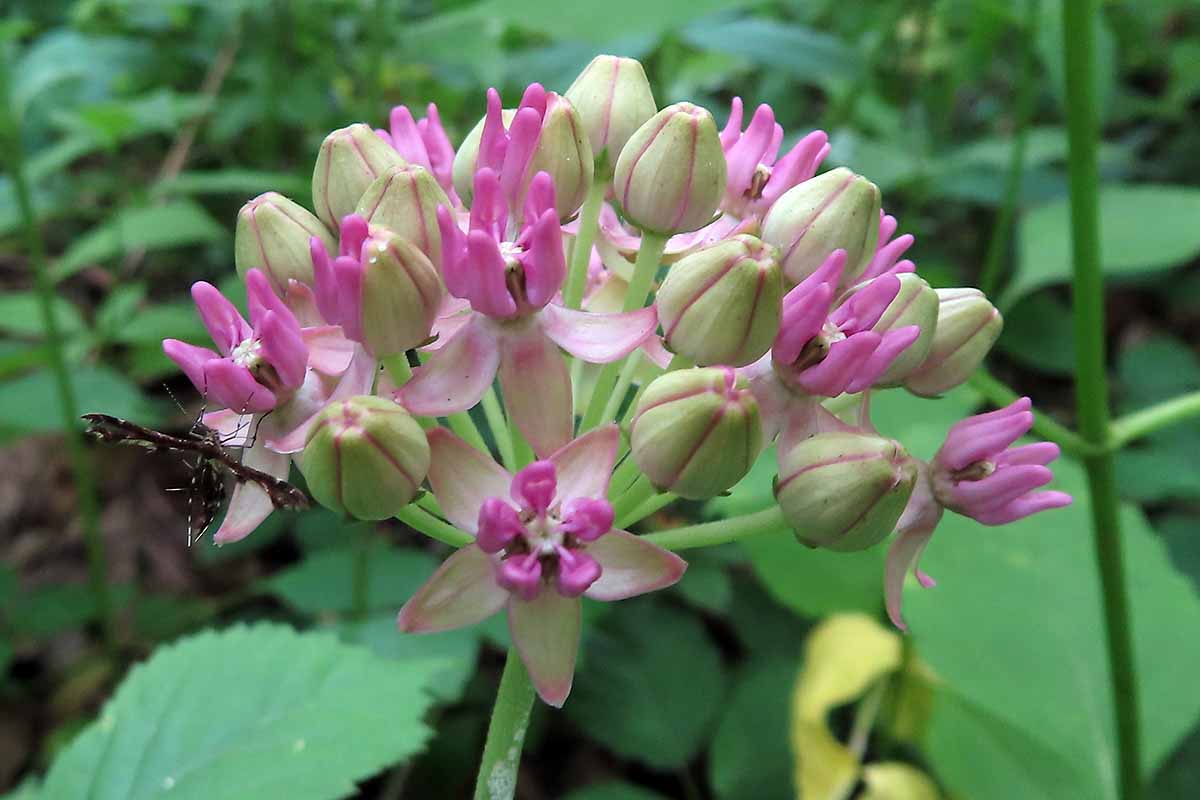Registrar: Amanda Bielskas
Trip Report: Janet Wooten
Participants: 17
Weather: Partly sunny to overcast, 64–68F, windy
Bird Species: 38
While Van Cortlandt Park’s 1,146 acres provide plenty of habitat for a wide range of interesting plants and wildlife, the participants of this field trip were laser-focused on insects. We began at the brushy area behind the Van Cortlandt House, where we found Least Skippers and a Banded Hairstreak, and where the experienced and sharp-eyed Mike Freeman spotted numerous other insects. From there, Ken Chaya, a renowned naturalist with many areas of expertise, led the way along the John Kieran Nature Trail to the Lake, where we studied the differences among damselflies of various species, so delicate and colorful as they weaved among the grasses.
Next we hiked past the Parade Grounds to the Cass Gallagher Nature Trail and the Northwest Forest, where we spent the afternoon searching for our target species for the day, the Silvery Checkerspot, as well as other insects. This lovely orange- and black-patterned butterfly prefers wooded areas like this one, but it has a short life. Despite unseasonably cool and windy conditions, we did find a Silvery Checkerspot to admire as it perched on a vine leaf, wings spread flat to absorb as much energy as possible from the light. We were thrilled!
But we also took note of many plants and birds. Naturally growing Purple Milkweed was just about to blossom. The Sassafras forest impressed us with its straight trunks and sheer volume, and the beautiful Black Cohosh was in flower. At the base of a tree we found Dead Man’s Fingers, a saprobic fungus that looks eerily like pale and fuzzy fingers poking up from the ground. We couldn’t ignore the 17 Wood Ducks on the Lake, or the breeding Tree Swallows and House Wrens feeding their young, or the croaking calls of Common Ravens overhead. An Osprey visited the Lake, as did a Green Heron. And a tiny Eastern Cottontail quietly munched on some clover.
Our heads were spinning with the numerous insects Ken encouraged us to observe. Soon everyone on the trip was noticing various syrphid flies, moths, wasps, beetles, and bugs of all kinds. A tiny Praying Mantis nymph, an Orchard Orbweaver Spider in its web, an Orange Bluet, a pair of Snipe Flies, a Parasitic Wasp—all captured our attention. The many photographers and iNaturalist users in our group documented our finds, giving us hope that what we learned about insects on this nature walk will stay with us and provide a foundation for deeper discovery.
Species Lists
Insects
Coleoptera
Lady Bird Beetle (Coccinelloidea family)
Red Milkweed Beetle (Tetraopes tetrophthalmus)
Clavate Tortoise Beetle (Helocassis clavata)
Black Firefly (Lucidota atra)
Rove Beetle (Staphylinidae family)
Diptera
Common Oblique Syrphid Fly (Allograpta obliqua)
Crane Fly (Tipulidae family)
Snipe Fly (Chrysopilus fasciatus)
Marsh Snipe Fly (Rhagio tringarius)
Green Bottle Fly (Lucilia genus)
Tachinid Fly (Tachinidae family)
Robber Fly (Asilidae family)
Long-legged Fly (Dolichopodidae family)
Stilt-legged Fly (Micropezidae family)
Eastern Calligrapher (Toxomerus geminatus)
European Drone Fly (Eristalis arbustorum)
Hemiptera
Large Milkweed Bug (Oncopeltus fasciatus)
Spittle Bug (Cercopiodea family)
Plant Bug (Miridae family)
Leaf Hopper (Cicadellidae family)
Spotted Lanternfly (Lycorma delicatula)
Pale Green Assassin Bug (Zelus luridus)
Leaf-footed Bug – nymph (Coreidae family)
Virginia Creeper Treehopper (Telamona ampelopsidis)
Hymenoptera
European Hornet (Vespa crabro)
Eastern Yellowjacket (Vespula maculifrons)
Ensign Wasp (Evaniidae family)
Nomad Bee (Nomada sp.)
Common Eastern Bumble Bee (Bombus impatiens)
Honey Bee (Apis mellifera)
Eastern Carpenter Bee (Xylocopa virginica)
Mantodea
Praying Mantis (Mantidae family)
Mecopteran
Hangingfly (Bittacus sp.)
Lepidoptera
Cabbage White (Pieris rapae)
Question Mark (Polygonia interrogationis)
Least Skipper (Ancyloxypha numitor)
Silver-spotted Skipper (Epargyreus clarus)
Banded Hairstreak (Satyrium calanus)
Summer Azure (Celastrina neglecta)
American Lady (Vanessa virginiensis)
Zabulon Skipper (Lon zabulon)
Eastern Tiger Swallowtail (Papilio glaucus)
Silvery Checkerspot (Chlosyne nycteis)
Polyphemus Moth (Antheraea polyphemus)
Plume Moths (Pterophoridae) ?
Grape Plume Moth (Geina periscelidactylus)
Delicate Cycnia Moth (Cycnia tenera)
Little Devil Moth (Dichomeris nonstrigella)
Odonates
Eastern Forktail (Ischnura verticalis)
Fragile Forktail (Ishnura posita)
Orange Bluet (Enallagma signatum)
Variable Dancer (Argia fumipennis)
Ebony Jewelwing (Calopteryx maculata)
Spot-winged Glider (Pantala hymenaea)
Blue Dasher (Pachydiplax longipennis)
Common Whitetail (Plathemis lydia)
Arachnids
Araneae
Orchard Orbweaver Spider (Leucauge venusta)
Golden Jumping Spider (Paraphidippus aurantus)
Opiliones
Harvestman
Birds
Canada Goose (Branta canadensis)
Wood Duck (Aix sponsa)
Mallard (Anas platyrhynchos)
Rock Pigeon (Feral Pigeon) (Columba livia (Feral Pigeon))
Mourning Dove (Zenaida macroura)
Chimney Swift (Chaetura pelagica)
Double-crested Cormorant (Nannopterum auritum)
Green Heron (Butorides virescens)
Turkey Vulture (Cathartes aura)
Osprey (Pandion haliaetus)
Red-tailed Hawk (Buteo jamaicensis)
Red-bellied Woodpecker (Melanerpes carolinus)
Downy Woodpecker (Dryobates pubescens)
Northern Flicker (Yellow-shafted) (Colaptes auratus auratus/luteus)
Eastern Kingbird (Tyrannus tyrannus)
Warbling Vireo (Vireo gilvus)
Blue Jay (Cyanocitta cristata)
Common Raven (Corvus corax)
Black-capped Chickadee (Poecile atricapillus)
Northern Rough-winged Swallow (Stelgidopteryx serripennis)
Tree Swallow (Tachycineta bicolor)
Barn Swallow (Hirundo rustica)
House Wren (Troglodytes aedon)
Carolina Wren (Thryothorus ludovicianus)
European Starling (Sturnus vulgaris)
Gray Catbird (Dumetella carolinensis)
Northern Mockingbird (Mimus polyglottos)
Wood Thrush (Hylocichla mustelina)
American Robin (Turdus migratorius)
Cedar Waxwing (Bombycilla cedrorum)
House Sparrow (Passer domesticus)
American Goldfinch (Spinus tristis)
Song Sparrow (Melospiza melodia)
Baltimore Oriole (Icterus galbula)
Red-winged Blackbird (Agelaius phoeniceus)
Common Grackle (Quiscalus quiscula)
Yellow Warbler (Setophaga petechia)
Northern Cardinal (Cardinalis cardinalis)
Fungus
Dead Man’s Fingers (Xylaria polymorpha)
Mammals
Eastern Cottontail (Sylviagus floridanus)
Eastern Chipmunk (Tamias striatus)
Eastern Gray Squirrel (Sciurus carolinensis)
Plants
Poison Ivy (Toxicodendron genus)
Jewelweed (Impatiens capensis)
Garlic Mustard (Alliaria petiolata)
Staghorn Sumac (Rhus typhina)
Common Milkweed (Asclepias syriaca)
Butterfly Milkweed (Asclepias tuberosa)
Purple Milkweed (Asclepias purpurascens)
Black Cohosh (Actaea racemosa)
Sassafras (Sassafras albidum)
Northern Spicebush (Lindera benzoin)
London Plane Tree (Platanus x acerifolia)
Common Hackberry (Celtis occidentalis)
American Wintergreen (Pyrola americana)
Summer Grape (Vitis aestivalis)
Wineberry (Rubus phoenicolasius)
Blackberry (Rubus ursinus)
Linden (Tilia tomentosa)
Bog Yellowcress (Rorippa palustris)
Common Cattail (Typha latifolia)
